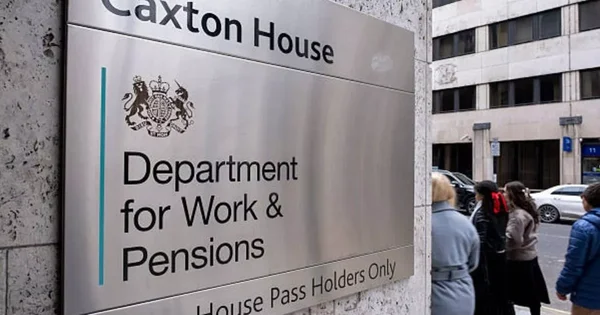Real Simple Summary
Cryptocurrency investments can be exciting, but they come with tax implications in the UK. Not every sale is taxable though, which is good news for casual investors.
Her Majesty's Revenue and Customs (HMRC) treats cryptocurrencies as assets subject to Capital Gains Tax rules, not as actual currency. Understanding your annual tax-free allowance is crucial if you're buying and selling crypto assets.
Track your crypto transactions automatically with Pie tax, the UK's first personal tax app, to stay within your tax-free allowance. Or if you're just here to get to grips with it all, let's break it down!
The UK Crypto Tax-Free Allowance: How Much Can You Sell?
The current Capital Gains Tax allowance in the UK is £3,000 for the 2023/24 tax year. This is your tax-free buffer before HMRC wants a cut of your profits.
This allowance applies to all your capital gains combined – not just crypto. So if you've sold shares or other assets, those gains count towards the same limit.
Previous tax years had a much higher allowance. In 2022/23, it was £12,300, more than four times the current amount!
The allowance is per person, not per cryptocurrency. Whether you're trading Bitcoin, Ethereum, or dozens of different tokens, you get one £3,000 allowance.
Married couples can use both of their allowances. This effectively doubles the tax-free amount to £6,000 if assets are held separately.

How HMRC Views Cryptocurrency
HMRC classifies crypto as digital assets rather than actual currency. This classification determines how your crypto activities are taxed.
When you sell or exchange crypto, HMRC sees it as disposing of an asset. This potentially triggers Capital Gains Tax on any profit made.
Even swapping one cryptocurrency for another counts as a disposal in HMRC's eyes. Many investors miss this important point when calculating their tax liability.
Mining rewards, staking income, and airdrops are typically treated as income when received. These are subject to Income Tax rather than Capital Gains Tax.
HMRC expects you to keep detailed records of all your crypto transactions. This includes dates, amounts, and values in pounds sterling.
Calculating Your Crypto Capital Gains
Working out your capital gains is straightforward in principle: subtract what you paid from what you received when selling. The difference is your taxable gain.
Transaction fees, gas fees, and other costs can be deducted from your gains. This reduces your potential tax bill and is worth tracking carefully.
When you've bought the same cryptocurrency at different times and prices, HMRC's "pooling" rules apply. These determine your cost basis for tax calculations.
If you've made losses on some crypto sales, these can be offset against your gains. This might keep your total gains under the £3,000 allowance.
I once miscalculated my cost basis after buying Bitcoin across three exchanges. It resulted in overpaying my tax by nearly £600 before I spotted the error.

When Do You Need to Report Crypto Sales?
You must report your crypto activity to HMRC if your total gains exceed the annual £3,000 allowance. This is non-negotiable, even for small overages.
You also need to report if your total proceeds from crypto sales exceed £50,000 in a tax year. This applies even if your actual gain is below the allowance.
Reporting is done through a Self-Assessment tax return. This must be submitted by 31 January following the tax year end (5 April).
Late reporting can result in penalties starting at £100. These increase the longer you delay, potentially reaching thousands of pounds. If you've never filed a Self-Assessment before, you'll need to register with HMRC first. This process can take several weeks, so don't leave it until January.
Legal Ways to Reduce Your Crypto Tax Bill
Using your annual CGT allowance efficiently is the simplest way to minimise your tax liability. Consider timing your sales strategically.
Spreading sales across tax years makes the most of each year's allowance. Selling £3,000 worth of gains in March and another £3,000 in April uses two allowances.
Transferring assets to your spouse or civil partner could utilise both of your allowances. These transfers aren't subject to CGT in the UK.
If you've made losses on other investments, these can offset crypto gains. Keep records of all investment losses, even from previous years. Some crypto investments in qualifying startups might be eligible for tax relief schemes. EIS or SEIS can offer significant tax advantages for early-stage investments.

Common Crypto Tax Mistakes to Avoid
Many UK investors wrongly assume that crypto-to-crypto trades aren't taxable. They absolutely are, and HMRC is increasingly checking for compliance.
Forgetting to track your cost basis accurately can lead to paying too much tax. Worse, underpaying could result in penalties and interest charges.
Missing the Self-Assessment deadline is an expensive mistake. It adds unnecessary penalties to your tax bill, starting at £100 even if no tax is due. Not keeping sufficient records is a common error. HMRC can ask for evidence of your transactions going back up to six years.
Using exchange rates from the wrong date when calculating gains can throw off your entire tax calculation. Always use the rate from the day of the transaction.
Final Thoughts
The UK crypto tax allowance gives investors a small £3,000 buffer before tax becomes payable each tax year. This is significantly lower than in previous years.
Keeping within this limit requires careful tracking of all your crypto activity. Understanding how it fits with your other investments is equally important.
As cryptocurrency regulations continue to evolve, staying up-to-date with HMRC guidance is essential. Tax rules can change with little notice. Tax planning should be part of your overall crypto strategy from day one. Don't leave it as something to scramble with at tax time.

Pie.tax: Simplifying Crypto Tax Calculations
Navigating crypto tax doesn't have to give you a headache. Pie tax automatically tracks your transactions in real-time, showing your remaining tax-free allowance throughout the year.
Our tax tools understand the complexities of DeFi, NFTs, and trading across multiple platforms. This saves you from spreadsheet nightmares and potential calculation errors.
The app connects with major UK exchanges and wallets, ensuring all your crypto moves are captured accurately. Nothing falls through the cracks when it's time for HMRC reporting.
We've helped thousands of UK crypto investors save both time and money on their tax calculations. Many users discover deductible costs they would have otherwise missed.
Pop over to the Pie.tax website if you'd like to see how our tools could simplify your crypto tax journey.









